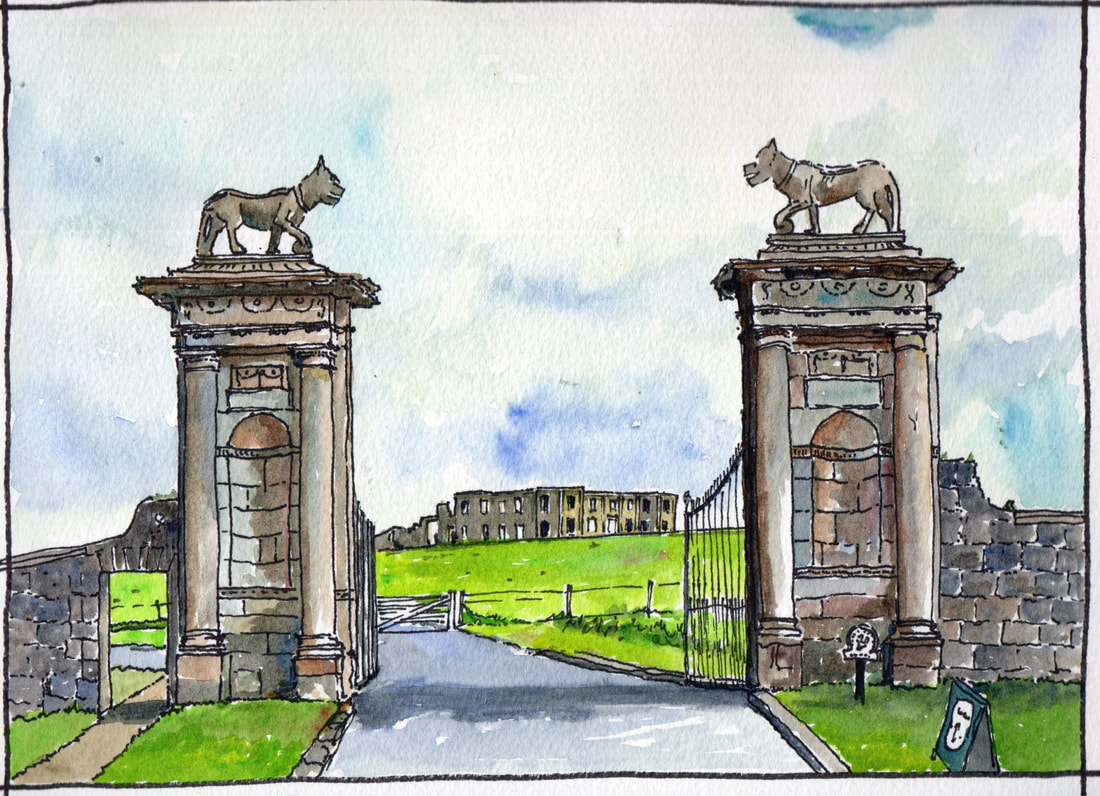The Lion's Gate was the first gate to the Earl Bishop's Estate at Downhill and its still its most dramatic. It was constructed c.1780. On the cornice are a pair of leopards/lynxes , more properly referred to in heraldry as ‘ounces’. The creatures resemble the leopard-like animals on the Bishop's coat of arms and were added c1787. The house beyond was largely constructed between 1772 and 1790 and held the Bishops extensive collection from his tours accross Europe. It was severely damaged by fire in 1851 but restored afterwards. Vacant by the 1930's it was requestioned by the Army during WWII and owners afterwards saught to have the building demolished to avoid a large rates bill. In 1949 the roof was taken off and the building gutted. It was aquired by the National Trust in 1980.


